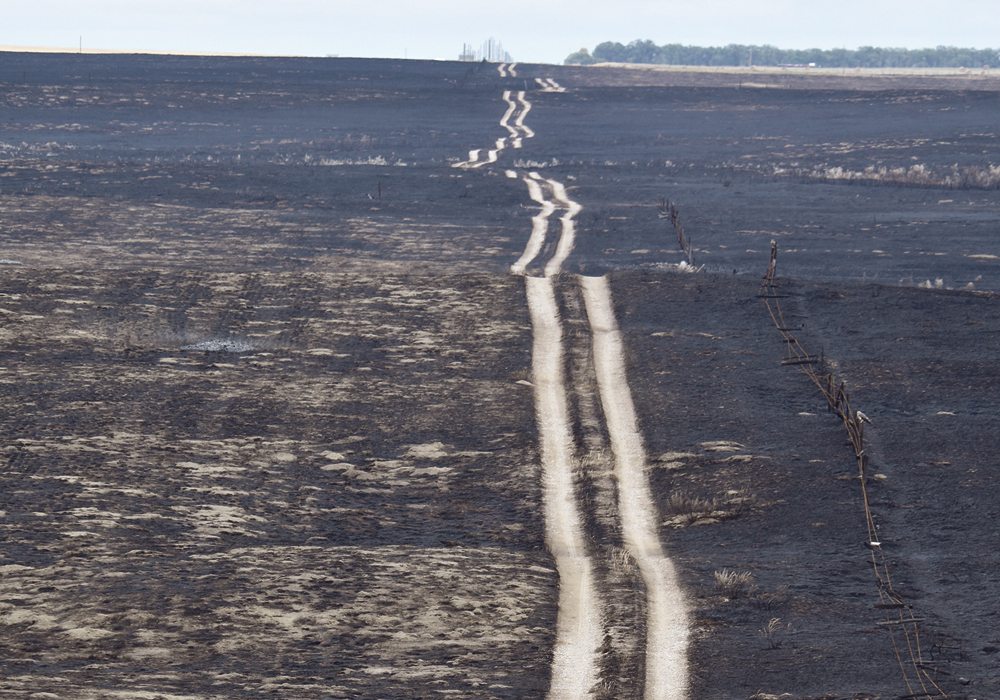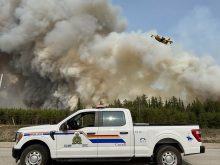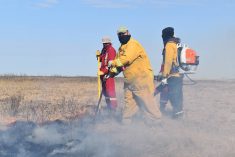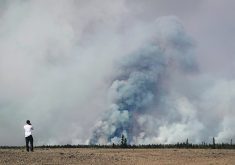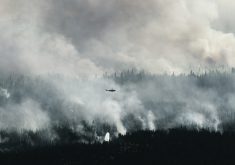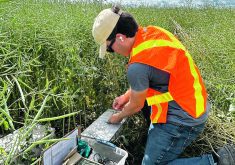AFTERMATH CFB Suffield was blamed for a fire in Alberta last September that killed 120 cattle and scorched thousands of acres
Tempers were almost as hot as fire last year when residents from the Bindloss, Alta., area met to discuss a Sept. 11-12 prairie fire that spread from Canadian Forces Base Suffield.
The blaze burned down one rancher’s home, killed about 120 cattle, burned winter feed supplies and scorched thousands of acres of native grassland and stubble.
Residents at the time accused CFB Suffield of being a bad neighbour, one that detonated explosive materials during a fire ban and was frequently the source of grass fires that spread beyond its borders in southeastern Alberta.
Read Also

Farming Smarter receives financial boost from Alberta government for potato research
Farming Smarter near Lethbridge got a boost to its research equipment, thanks to the Alberta government’s increase in funding for research associations.
Since then, officials have admitted the army base’s fault in the matter and a board of inquiry was launched.
Though ranchers have made claims for compensation, none has been paid to date, according to those contacted.
Other stories in this Special Report:
- Prairies brace for new fire season
- A land heals after devastating fire
- Fires continue to take toll on injured farmers
- Researcher studies how forages recover after fires
However, communication with the base has improved since last year.
Jeff Lewandoski, fire chief in Jenner, Alta., who also ranches near the edge of CFB Suffield, said base officials have met with area residents and volunteer fire departments to improve the relationship and consider fire risk mitigation.
“One of the things is, they’re going to install kind of a notification system for the area landowners to let them know and warn them of an oncoming fire,” said Lewandoski.
“We live with this smoke every day and you see it out there, it might be 20 miles out there. You don’t know.” “I said, ‘you need to let the area landowners know that it’s OK, too, that they’re not in danger, that you have it under control.’
“There needs to be a little bit more communication between us and the base, and that’s going to happen.”
Lewandoski also said the base was planning to install water bladders along the north end of its property as a temporary measure, though a system of underground cisterns would be better for long-term use. He said the base also talked about having water tanker trucks on hand.

CFB Suffield officials did not respond to queries about the fire situation or preventive measures.
During the September event, fire departments were initially denied access to the base to fight the fire, which allowed it to spread uncontrolled. Lewandoski said that has been rectified.
“Since the Bindloss fire, all the surrounding fire departments are allowed access into the base now to help them fight these fires. All it takes now is a phone call and we’re in there. So things are looking up in that respect.”
In a news release about current live-fire activities at CFB Suffield, the base said it has “highly trained” personnel capable of fighting fire on the base and in surrounding communities.
Lewandoski said training has been an issue.
“What the problem has been in the past is that range control looks after the fires on the base and they don’t have, necessarily, trained firefighters fighting those fires,” he said.
“They’re army soldiers that get put into that position for the year that they’re here. They get a little bit of training … on how to fight a grass fire, and they throw them out there. So they’re not really experienced.
“(Base officials) have stepped it up, and they are training these guys to a way larger extent this year than they have in the past. I’ve seen their training schedule. So far they have been more accommodating to whatever we’ve asked them to do.”
Jordon Christianson, chair of the Alberta Special Areas board, agreed that CFB Suffield now has better community engagement “at more of a ground level.”
He said decisions about handling unexploded ordinance are now made at a higher level than in the past.
“I commend the base on their efforts to improve,” he said.
As for lessons learned, he said the speed of the fire, driven by high winds in dry conditions, drove home the fact that defence would have been better than offence.
Like the ranchers affected, Special Areas has submitted as yet unpaid claims to the federal government for compensation to cover costs for lost community pasture and fences, as well as expenses related to firefighting equipment, labour and clean-up.




